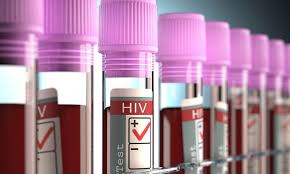Ghana recorded 15,290 new HIV infections and 12,614 AIDS-related deaths in 2024, according to data from the National and Sub-National HIV and AIDS Estimates and Projections.
The report revealed a concerning gender disparity, with 10,303 (67.4%) of the new infections occurring among females, compared to 4,987 (32.6%) among males. Currently, 334,721 people are living with HIV in Ghana, including 229,261 females and 105,460 males. The data also highlighted that 18,229 (5.4%) of those affected are children, underscoring the need for targeted interventions for vulnerable groups.
The findings were released during the launch of the HIV Estimates 2024 in Accra, where Nana Oye Bampoe Addo, Deputy Chief of Staff, emphasized the feminization of the HIV epidemic. She stressed the importance of prioritizing women and children in Ghana’s HIV prevention and response strategies. Addo called for urgent action to strengthen community systems, combat stigma and discrimination against people living with HIV, and expand access to lifesaving treatment and care services. The report also revealed gaps in HIV testing and treatment, with only 68% of Ghanaians aware of their status.
Despite the challenges, the report noted progress in treatment outcomes. Currently, 69% of diagnosed individuals are on antiretroviral therapy (ART), and 90% of those on treatment have achieved viral suppression. The projections further indicated that ART averted an estimated 229 deaths per week, saving 12,358 lives in 2024 alone. However, the high number of new infections and deaths highlights the need for increased public awareness, improved healthcare access, and sustained funding for HIV programs.
Health experts are urging the government and stakeholders to intensify efforts in HIV education, prevention, and testing, particularly among women and young people. Strengthening healthcare systems, reducing stigma, and ensuring consistent access to ART remain critical to curbing the epidemic. As Ghana works toward the global 95-95-95 targets—95% of people knowing their status, 95% on treatment, and 95% virally suppressed—the latest data serves as a crucial reminder of the work still needed to end AIDS as a public health threat.



